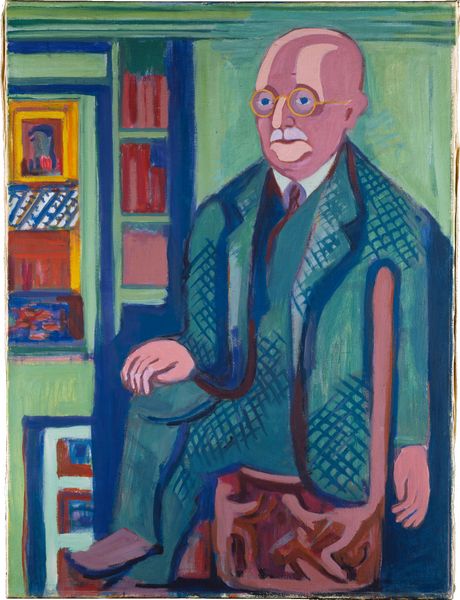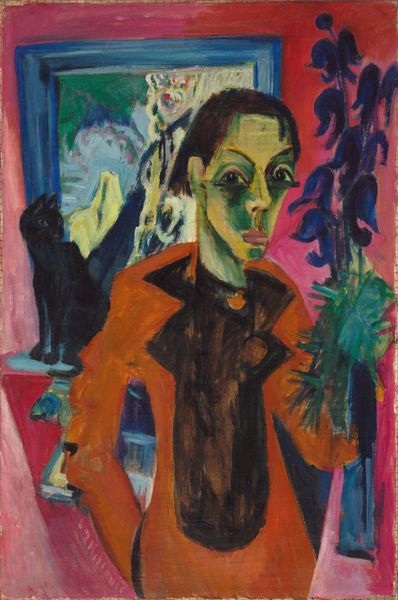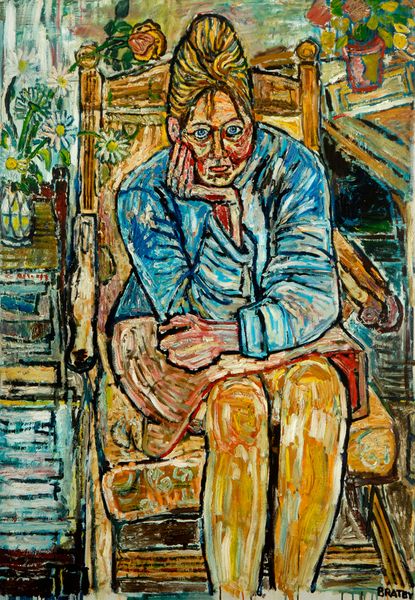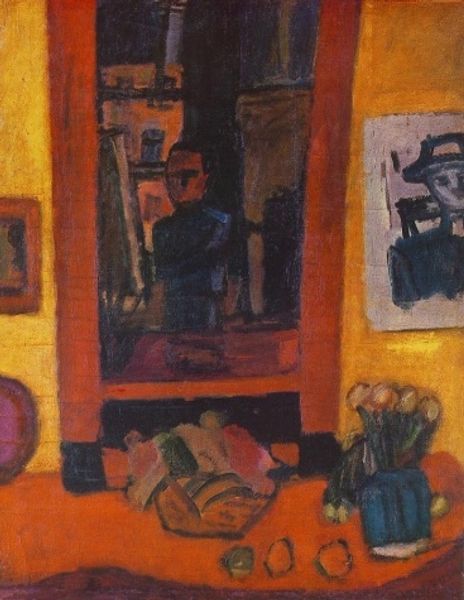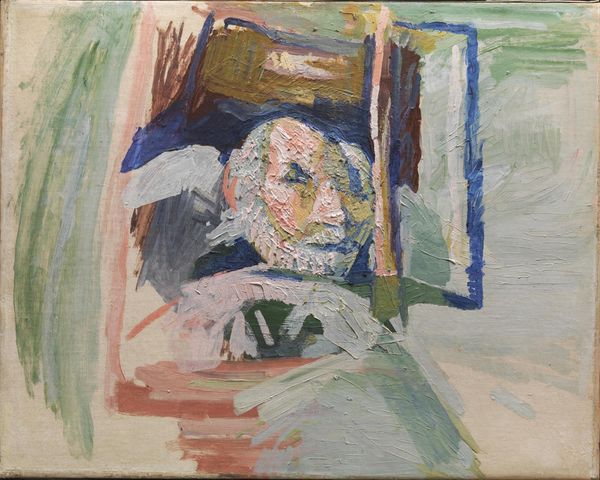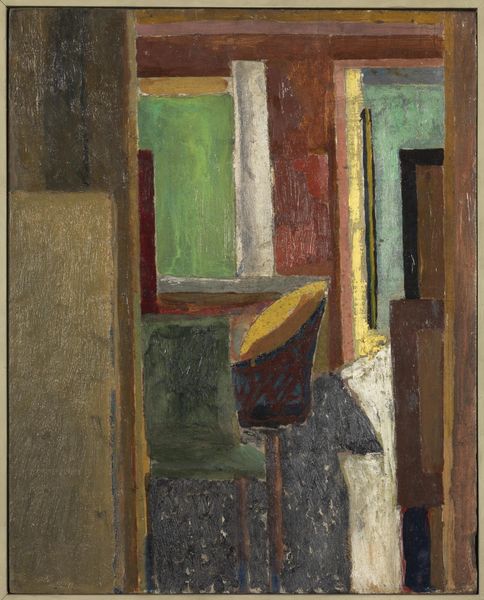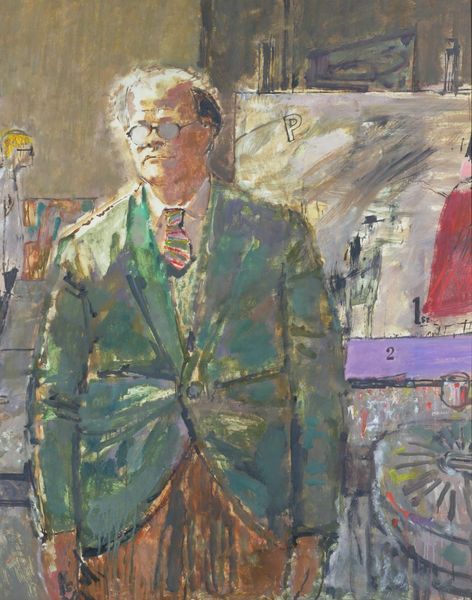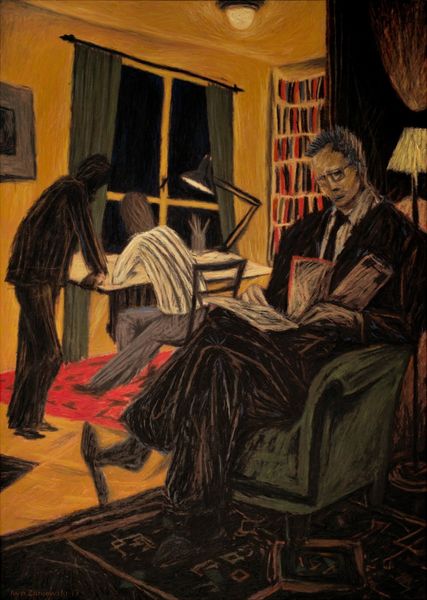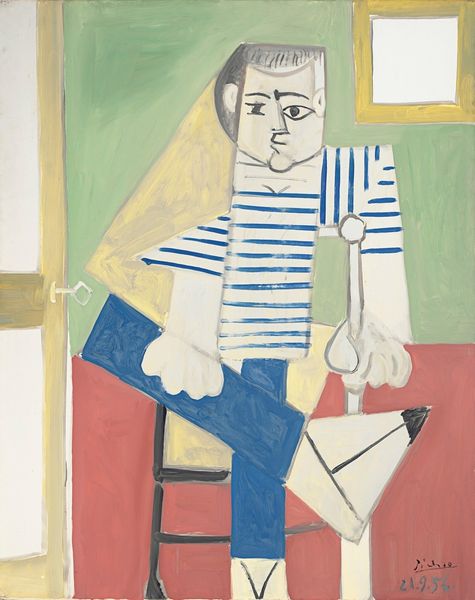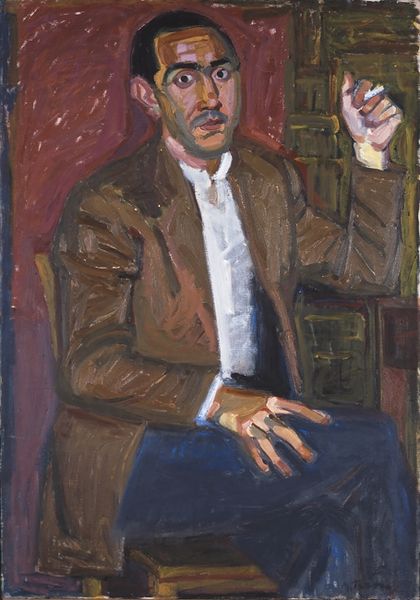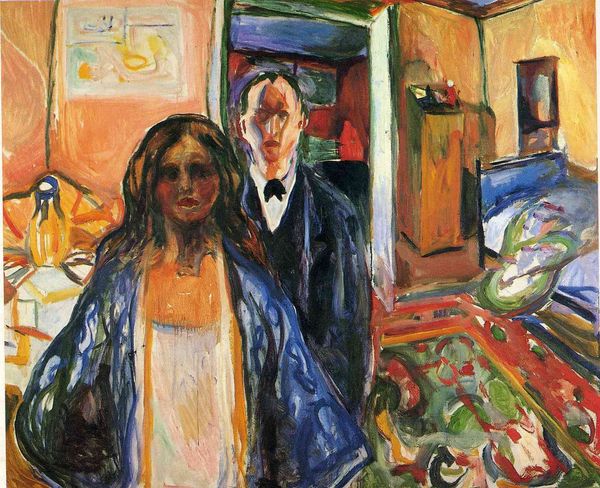
Copyright: Public Domain: Artvee
Editor: This is Edvard Munch's Self-Portrait, painted between 1940 and 1943, in oil. It strikes me as particularly unsettling, even for Munch. The colours are muted and there's a stark contrast between the artist and his surroundings. What stands out to you? Curator: What a fascinating distillation of his career. This painting serves almost as an inventory of Munch's life, doesn’t it? He has chosen to surround himself with potent symbols. Do you notice the placement of the grandfather clock to the left? Editor: Yes, it’s very dark and imposing. Curator: Exactly! Clocks in art often symbolize the passage of time, mortality. Considering Munch's history of mental health struggles and his preoccupation with death, the clock looms, quite literally. And what about the bed, centrally placed to the right of the portrait? What cultural connotations do beds typically evoke? Editor: A place of rest, or sickness… birth, death perhaps? Curator: All of those are true. It can also indicate vulnerability, particularly when combined with the artist's direct, almost confrontational gaze. The setting suggests a stage where the self is not only observed but also vulnerable, under examination, and under pressure from external forces. Do you think he’s inviting empathy, or perhaps projecting his own sense of isolation? Editor: That’s really interesting. I hadn’t thought about how he carefully staged these items. He doesn't seem to be seeking empathy; it feels like a confrontation. It’s powerful! Curator: Indeed. The continuity of these symbols throughout art history gives them a resonance that deepens our understanding of Munch's inner world, a cultural memory he taps into masterfully.
Comments
No comments
Be the first to comment and join the conversation on the ultimate creative platform.
